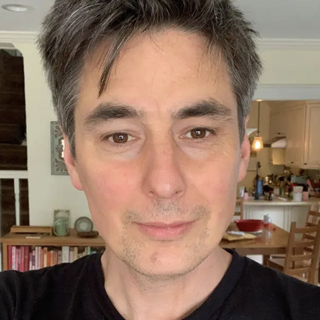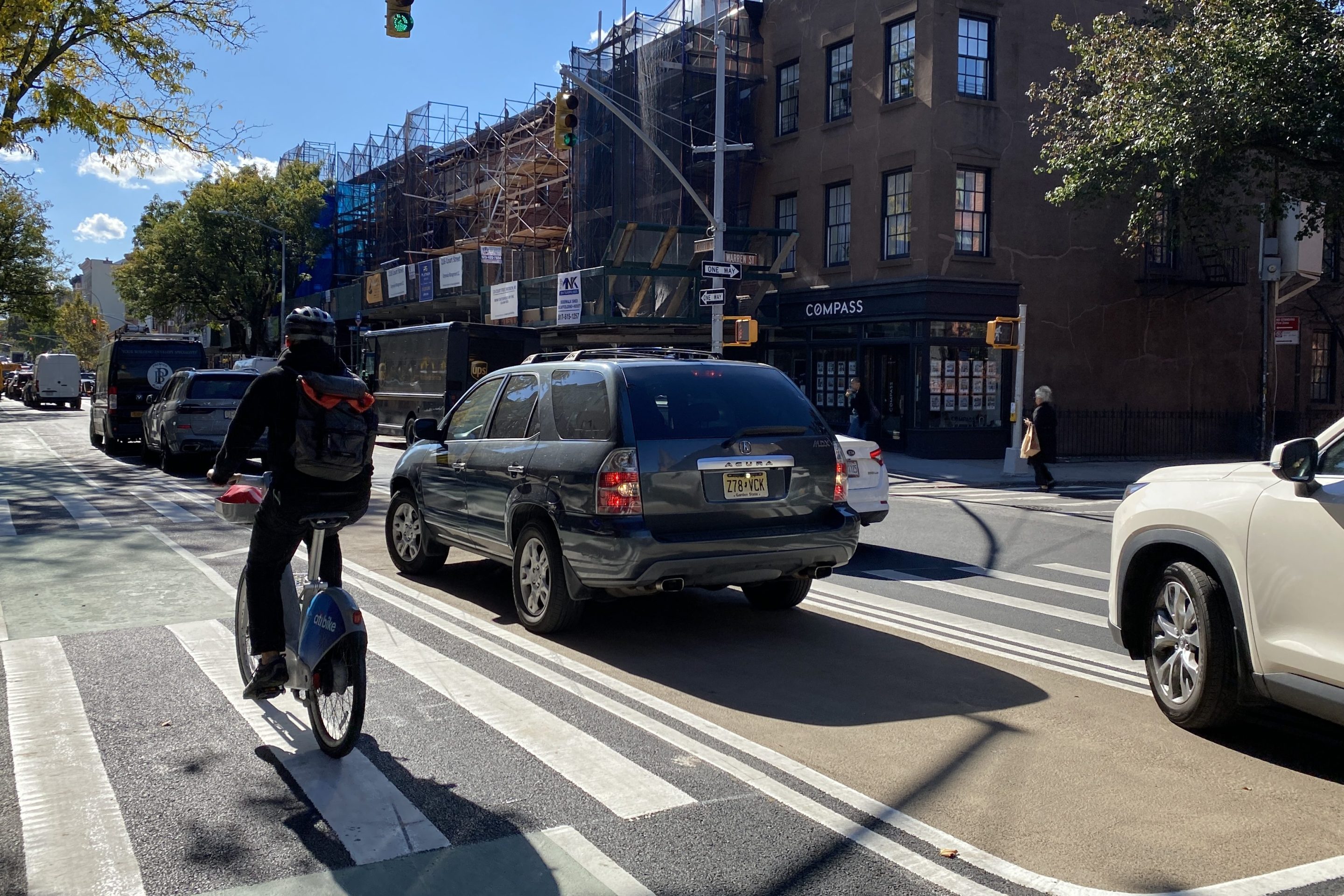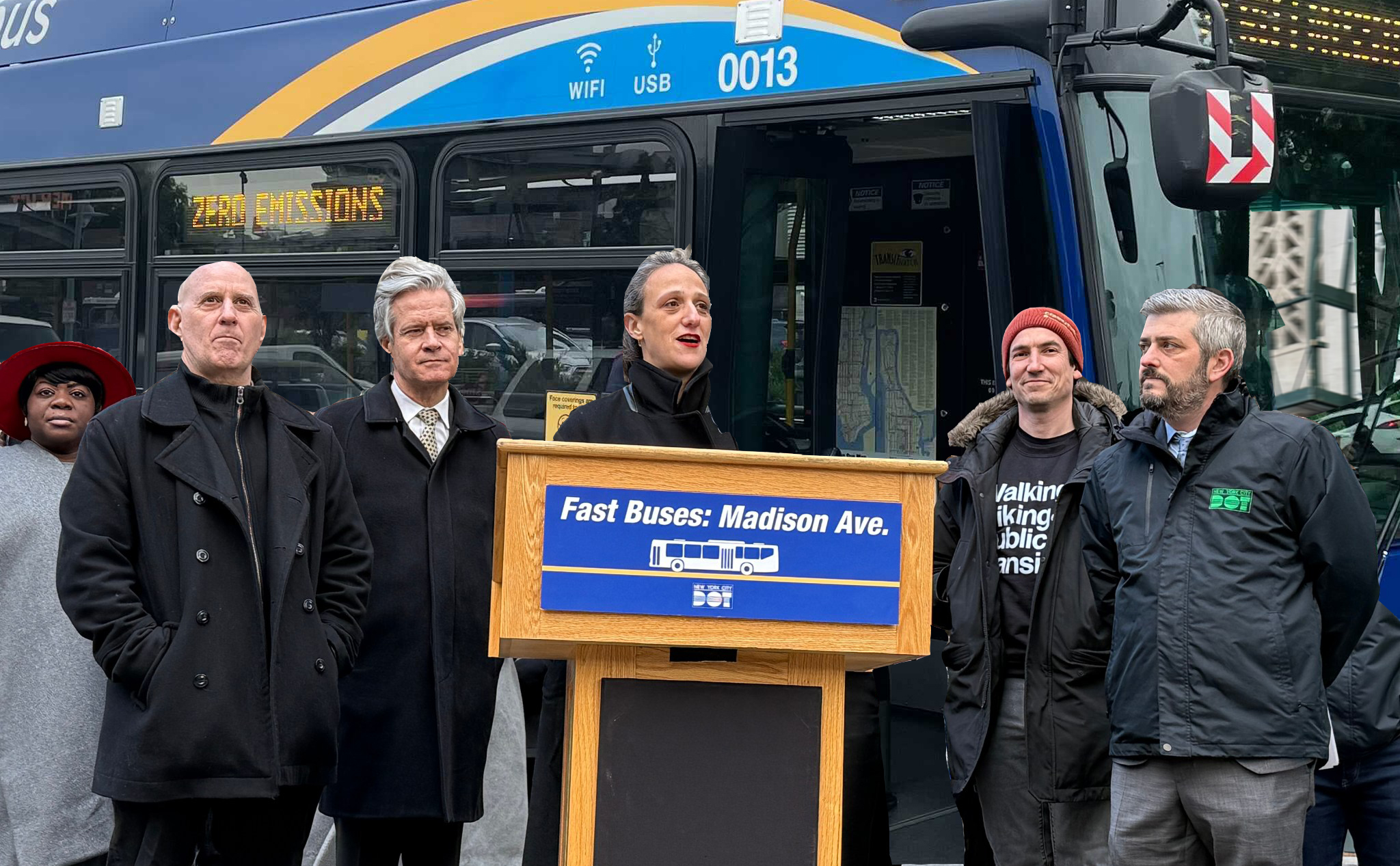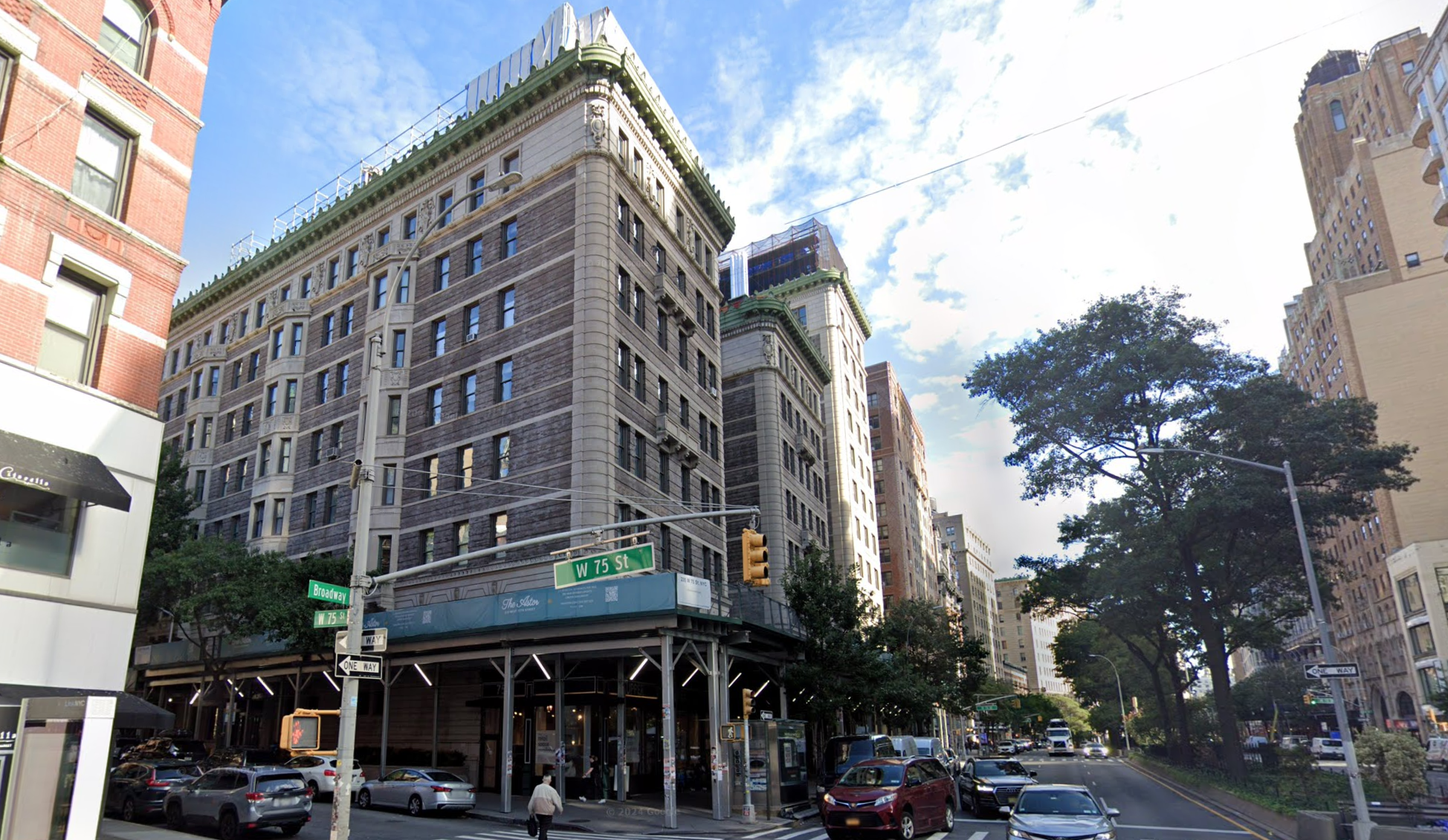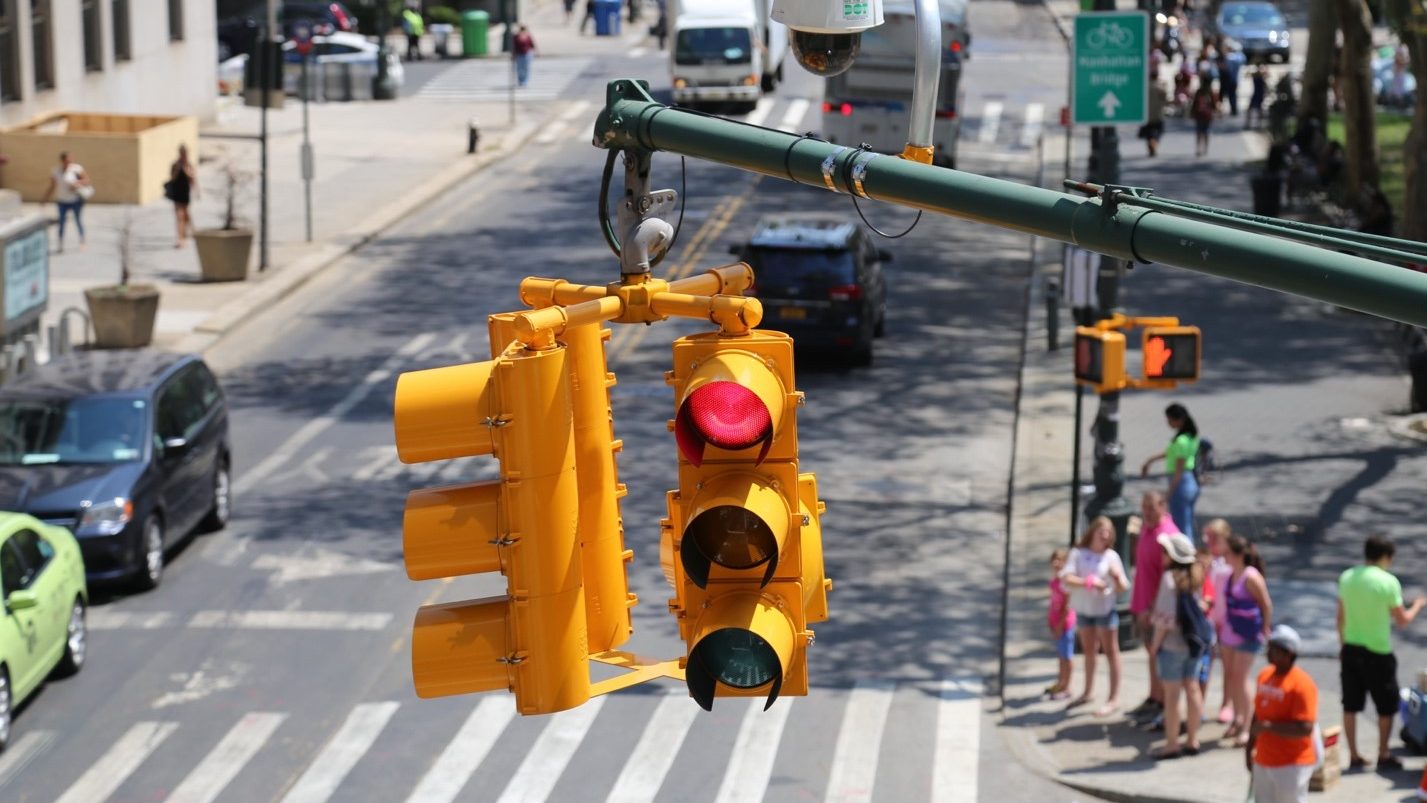My Council Member, Vickie Paladino, was slated to attend Sunday's rally against congestion pricing, though she reportedly did not show up. In the end, that was probably a good call, given that the small anti-tolling group was drowned out by supporters of congestion pricing.
Many of the supporters hailed from Manhattan and other densely populated parts of the city. But Paladino’s constituents — my neighbors — have an even greater interest in speaking out against her fight against the proposed tolls on car trips in Manhattan’s Central Business District.
Paladino claims to speak for “the working people” of our northeastern Queens district, which includes the neighborhoods of Little Neck, Douglaston, Whitestone, Auburndale, and Bayside, but she’s wrong — and her insistence that cars dominate on our streets hurts everyone, including her constituents.
To start, Paladino and other congestion pricing opponents misunderstand the demographics of who drives in New York City. New York City’s Independent Budget Office has shown that people who regularly drive into Manhattan earn 30 percent more on average than transit users. A large majority of commuters into Manhattan, including those from our district, do so by subway, railroad and bus. Don’t let Paladino and her allies fool you — opponents of congestion pricing speak for the wealthy minority, not working people.
That driver minority places an inordinate strain on the city’s roads and transportation network, causing congestion and slowing traffic for everyone. Automobiles use a disproportionate amount of road space compared to other transportation modes, and their presence on the street makes it harder for everyone else to get around. The bus from my home in Bayside, for example, usually takes over 30 minutes to get to downtown Flushing during rush hour, despite it being a barely three-mile trip. The streets are so clogged with single-passenger vehicles, the bus can barely function — and driving isn’t much faster! The same pattern plays out all over the five boroughs, with traffic snarled and bus travel slowed to a crawl. MTA buses have an average speed of just 7.9 miles per hour and spend most of their time stuck in traffic.
@DavidWeprin is speaking (I can’t hear) @AriKagan47 is here but where are @JoeBorelliNYC @NMalliotakis and the other anti-congestion pricing luminaries that were promised? pic.twitter.com/bZ5ejjl3Rc
— Christopher Robbins (@ChristRobbins) March 12, 2023
Cars themselves also pose an ever-present danger to people on our streets, including in eastern Queens. Within the past few years, several pedestrians have been struck and killed by drivers in Paladino’s district, including Maddie Serchen, aged 17, Dolores Soho, 88, and Lopamudra Desai, 82. Such incidents are not isolated, but part of a pattern: From 2018 to 2021, Bell Boulevard, our neighborhood’s key north-south artery (where Soho was killed), experienced 259 reported crashes resulting in 46 injuries, according to city stats. Excessive auto traffic has other negative health impacts as well. Between 8.9 percent and 12.9 percent of asthma attacks among children in hospitalization in Vickie Paladino’s district were attributed to high ozone levels, most of which is generated from motor vehicles.
Opponents of congestion pricing tend to regard these negative outcomes of driving as regrettable but unavoidable consequences of what they see as essential to the city’s commerce and prosperity. In a recent op-ed, Paladino herself argued that the main function of streets was “commerce.” But encouraging everyone to drive has huge economic costs. First of all, the cost of car ownership averages over $10,000 per year. That’s a heavy burden on families. And although people often assume that parking is crucial for businesses because all customers drive, customers in fact access commercial establishments through a variety of means, and public transit access is invaluable to businesses.
Vickie Paladino often touts her business acumen. She should recognize that building a transportation system around cars has a poor return on investment. Cars actually make our transportation network more costly and less efficient — the Queensborough Bridge transports fewer people today than it did before its trolley lanes were removed and its “opened” to automobiles. We pay for that with delays and lost productivity that costs New York City over billions of dollars per year. Paladino should recognize that the vibrancy of the city comes from its people, not from vehicles. Northeastern Queens will benefit from congestion pricing by encouraging people to use efficient modes of transit and funding improvements such as high-frequency Select Bus Service along major arterials.
As the city’s population approaches 9 million, it is more crucial than ever that we make efficient use of road space and that we emphasize the movement of people rather than vehicles. A single bus carries 60 people, removing about that many cars from the road. A single LIRR train carries hundreds. In contrast, most of the vehicles on our roads carry one person each and they require parking space to boot. Not only are single-passenger vehicles environmentally unsustainable and dangerous, they are simply impractical for travel in densely populated urban areas like New York.
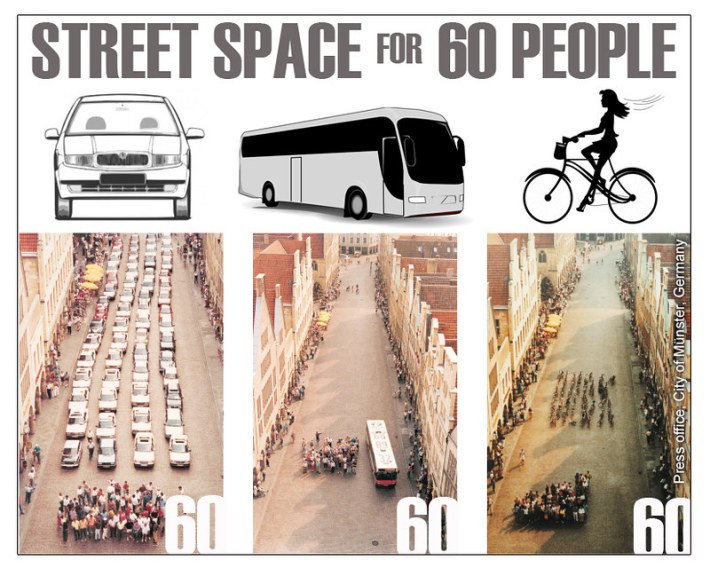
Cities that cater to drivers are more like mega suburbs, and they lack the kind of dynamism and energy that makes New York City distinctive. Space is a precious resource in New York City, and the more of it we use for cars, the less space we have for stores, parks, housing, hospitals, schools, and other constructive purposes. It is essential that we embrace transportation policies that make the most efficient use of road space and promote the safety and well-being of our people.
Congestion pricing is a step in the right direction for northeastern Queens.
Ben Turner is a resident of Bayside.

